 W
WThe uniforms of the United States Air Force are the standardized military uniforms worn by airmen of the United States Air Force to distinguish themselves from the other services.
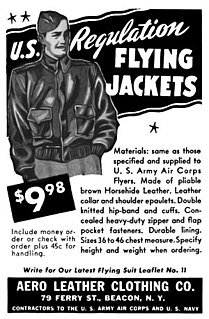 W
WThe Type A-2 leather flight jacket is an American military flight jacket originally invented and developed for and closely associated with World War II U.S. Army Air Forces pilots, navigators and bombardiers, who often decorated their jackets with squadron patches and elaborate artwork painted on the back. Sometimes casually referred to as a bomber jacket, its original designation was "Jacket, Pilot's (summer)", and its wartime usage was limited neither to pilots nor to bomber crews.
 W
WThe Airman Battle Uniform (ABU) is a U.S. camouflage combat uniform; it is a service-distinctive uniform as it is primarily used by the United States Air Force, its civilian auxiliary, and some civilian employees of the U.S. Department of Defense (DoD). It replaced the Battle Dress Uniform and Desert Camouflage Uniform on 1 November 2011 after a four-year phase-in period.
 W
WThe Army Combat Uniform (ACU) is the current combat uniform worn by the United States Army, U.S. Air Force, and United States Space Force.
 W
WThe Battle Dress Uniform (BDU) is a camouflaged combat uniform that was used by the United States Armed Forces as their standard combat uniform from the early 1980s to the mid-2000s. Since then, it has been replaced or supplanted in every branch of the U.S. Armed Forces.
 W
WA boonie hat or booney hat, is a form of wide-brim hat commonly used by military forces in hot tropical climates. Its design is similar to a bucket hat but with a stiffer brim. The Australian version has a thinner brim giving it the name a "Giggle hat." Often a fabric tape band of 'branch loops' is sewn around the crown of the hat. This 'foliage ring' is meant to hold additional vegetation as camouflage. A strap provides stability. The crown may be vented with eyelets or small mesh panels. Snaps may also be provided with which to fix the brim in the style of an Australian bush hat.
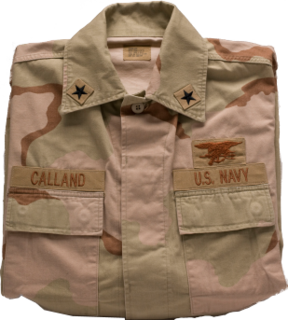 W
WThe Desert Combat Uniform (DCU) is an arid-environment camouflage uniform that was used by the United States Armed Forces from the mid-1990s to the early 2010s. In terms of pattern and textile cut, it is nearly identical to the U.S. military's Battle Dress Uniform (BDU) uniform, but features a three-color desert camouflage pattern of dark brown, pale green, and beige, as opposed to the beige, pale green, two tones of brown, and black and white rock spots of the previous Desert Battle Dress Uniform (DBDU).
 W
WThe "G-1" military flight jacket is the commonly accepted name for the fur-lined-collar World War II-era flight jacket of the United States Navy, Marine Corps, and Coast Guard. A similar jacket used by the United States Army Air Corps/United States Army Air Forces was usually called the A-2 jacket.
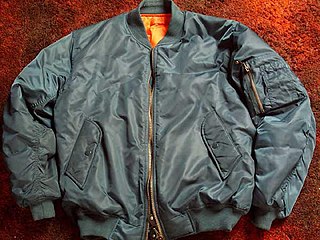 W
WThe MA-1 bomber jacket is an American military jacket which was developed in the 1950s. The MA-1 and its predecessor, the B-15 flight jacket, were originally developed and needed at that time because the emergence of the jet age created new requirements for pilot performance, safety, and comfort.
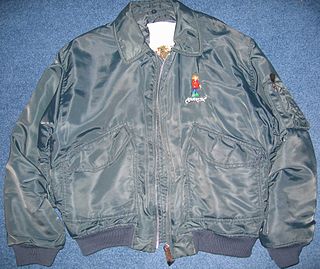 W
WThe MA-2 bomber jacket is an advanced version derived of the original MA-1 bomber jacket that was originally designed for the American military during the 1950s. CWU stands for "Cold Weather Uniform."
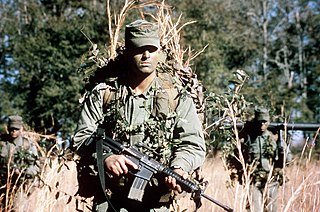 W
WA patrol hat, also known as a field cap, is a soft kepi with a stiff, rounded visor, and flat top, somewhat similar to a baseball cap, worn by the military personnel of some countries in the field when a combat helmet is not required.